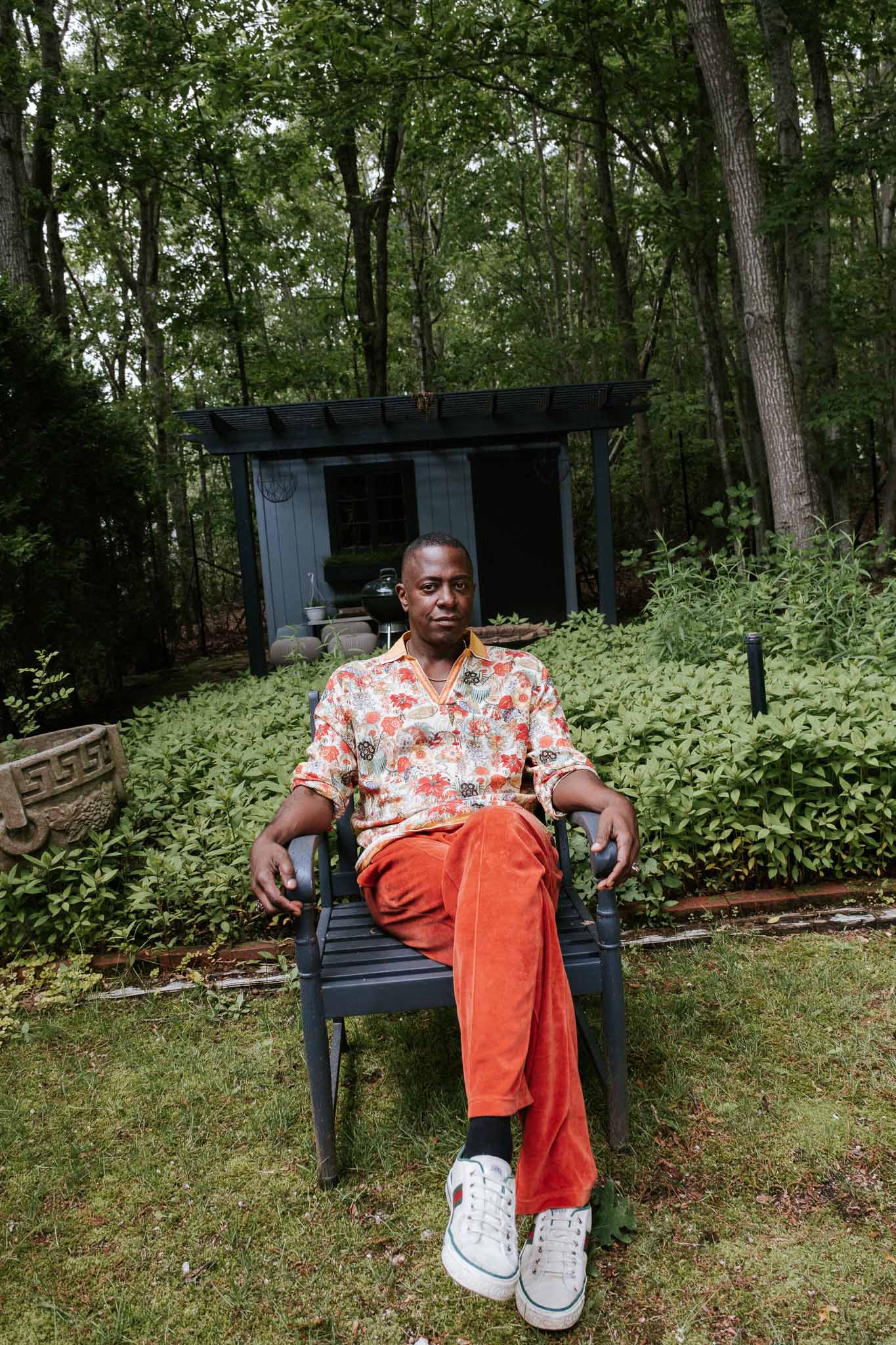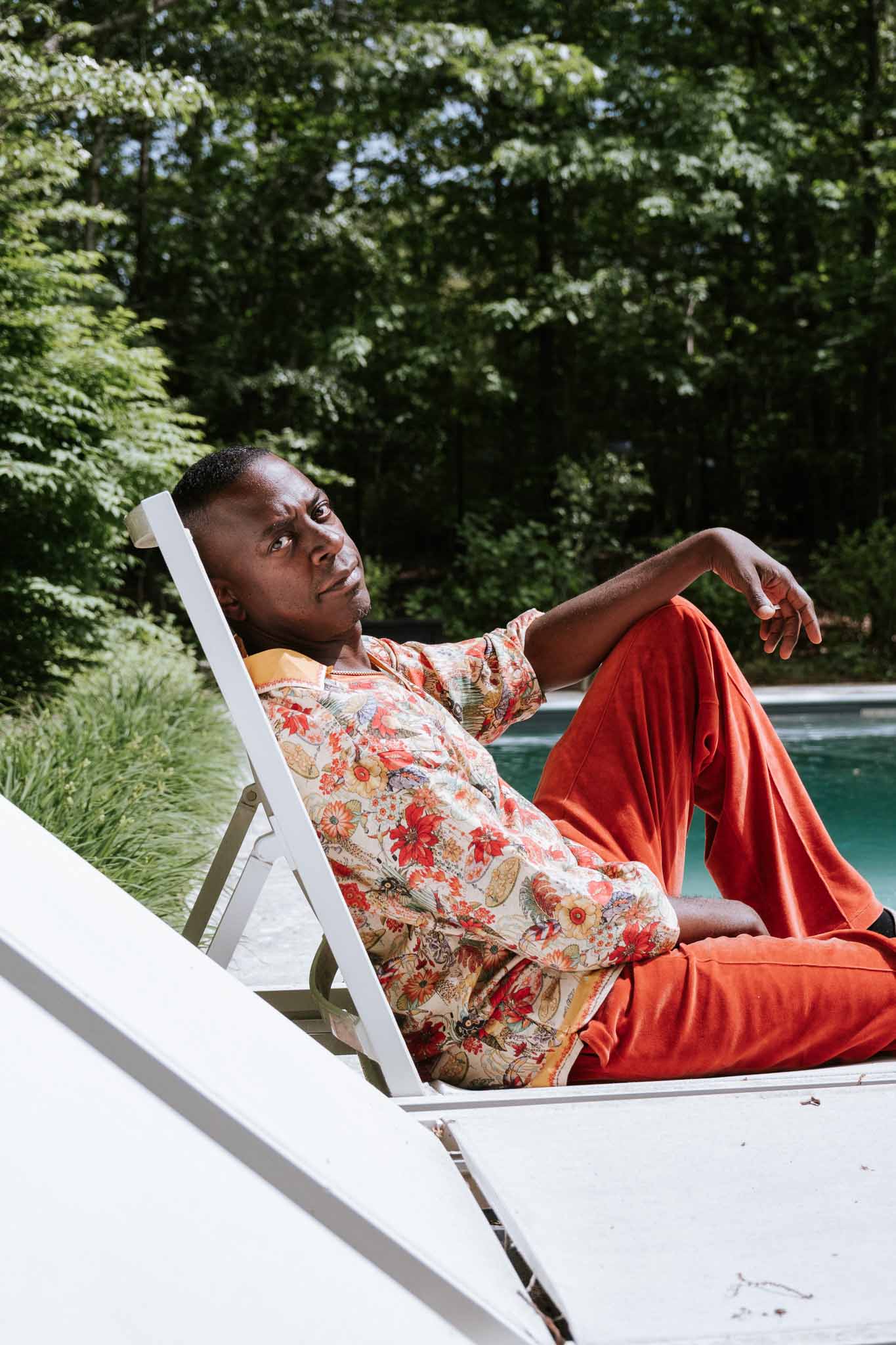
At 54, Sanford Biggers is already an elder statesman in the art world. The Los Angeles–born polymath describes his process as “conceptual patchworking,” finding inspiration in sources both material and abstract—from recycled quilts, African masks, and classic European sculpture to hip hop and Afrofuturism.
In July, the Parrish Museum will honor the artist, who is based between New York and Sag Harbor, at the institution’s annual Midsummer Gala in anticipation of a solo exhibition, opening next summer, organized by Chief Curator Corinne Erni. “At the Parrish, we work with artists who have a deep connection to the East End of Long Island, or who are in meaningful dialogue with the art historical relevance of this place,” says Parrish Executive Director Mónica Ramírez-Montagut. Biggers, undeniably, embodies both.
CULTURED’s Hamptons Editor Jacoba Urist caught up with the artist at his Bronx studio for a discussion about the summer’s festivities before he decamped out East.

CULTURED: Each of the Hamptons has its own character. How did you choose Sag Harbor?
Sanford Biggers: Sag Harbor was a middle-class Black enclave for several generations. I grew up in a similar type of neighborhood—although much larger—in Los Angeles, called Baldwin Hills. The village in Sag Harbor is one of our favorite places to walk around. We visit the cafes, the bookstore, and the Church and galleries to see art. The Hamptons encompass many different vibes—worlds within worlds. I like the flavor of Sag Harbor because it feels a little more low-key, small-town.
CULTURED: What makes the Parrish Museum a unique place to see art?
Biggers: I love the architecture. My kids enjoy the museum too. There’s the height of the building, the skylights. You experience its beauty just from driving by. I like visiting when it’s gray and rainy—it gets misty, and you can see the fog over the landscape. I’m incredibly excited to be honored by the Parrish this summer. It’s particularly gratifying to be recognized in your hometown. I’m thrilled to be embraced by this part of my life.

CULTURED: Your use of antique quilts in contemporary art is legendary. What inspired you to use these found textiles?
Biggers: A lot of my projects start with historical research—incongruities and inconsistencies, strange or awkward moments in history that spark an idea. Years ago, I learned that quilts were used along the Underground Railroad as signposts. Historians have debated whether this is true, but the idea was that a quilt hung in a certain way or showing a particular pattern contained a code that enslaved people would be able to read. I soon found myself using my mediocre sewing skills to repair quilts and create new canvases from them. I then use materials on top of them, like spray paint, oil, acrylic, tar, and glitter—and of course other textiles—to make elaborate paintings and drawings.
I used to do graffiti growing up in Los Angeles. Working on these quilts, I’m struck by a tension: Am I beautifying these artifacts, or am I desecrating them? Am I making them better, or am I disregarding what came before? It’s like sampling—a song from when you were a kid that disappeared until some rapper or pop star sampled it. Now, it’s the biggest song on the radio. Is that good or bad? For me, it’s about the intention.










 in your life?
in your life?

